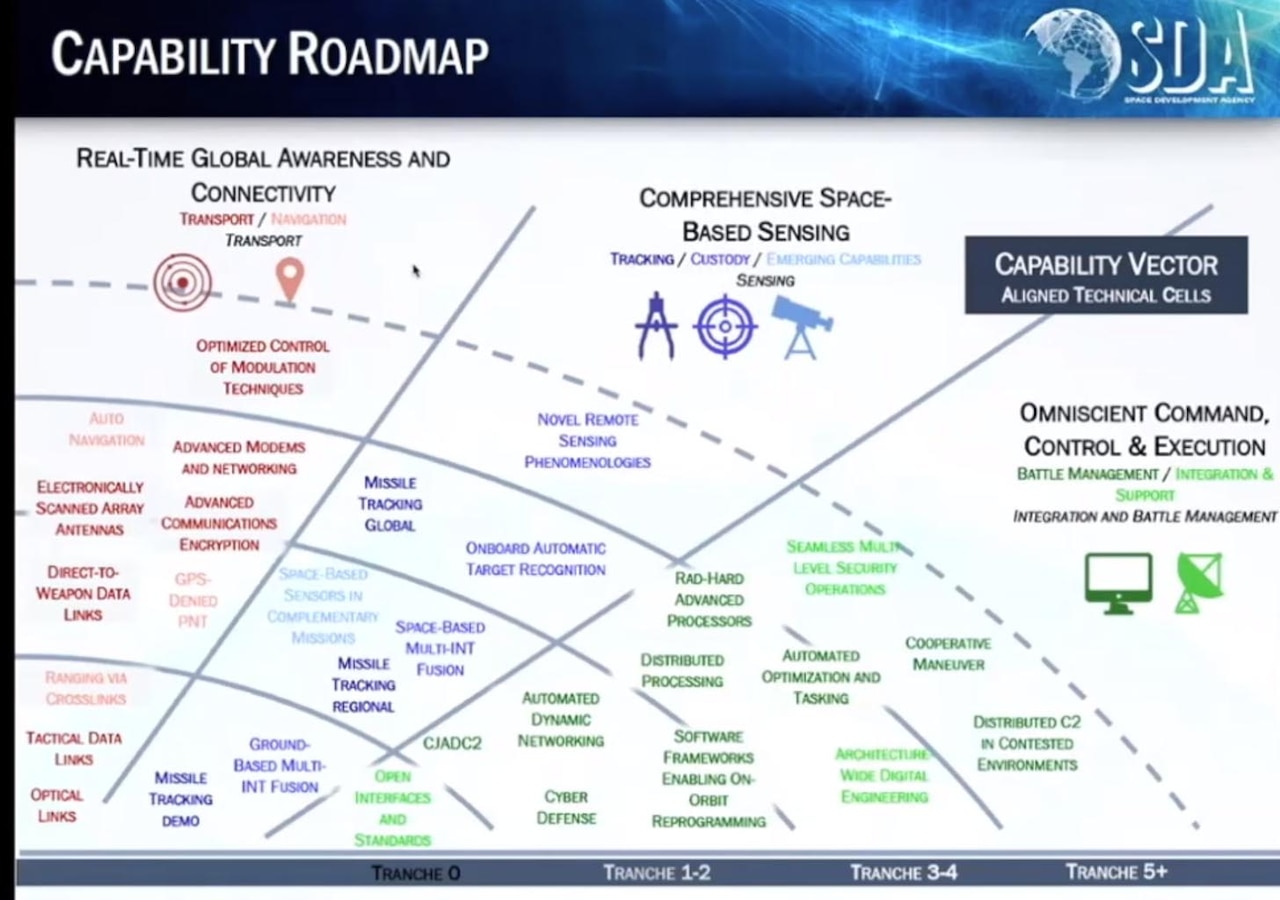follow.
Feb. 12, 2021 | , DOD News
The Space Development Agency is responsible for unifying and integrating the Defense Department's space development efforts and accelerating the fielding of new military space capabilities.

The SDA is set up to exist and to operate as an efficient, commercial-type entity within the department. As such, it's designed to deliver capability to the warfighter, whether it be satellites and other space-based assets, such as missile and hypersonic vehicle tracking sensors, SDA Director Derek Tournear told attendees of the virtual Small Satellite Symposium yesterday.
An important approach the SDA has taken is seeking out small and large innovative technologies that have space-based applications, he said.
The current focus is on producing thousands of low-cost satellites that deliver resilience and capability through a meshed network of interconnected satellites that provide connectivity directly to existing tactical datalinks, which then talk to weapons systems, he said.
Many of those satellites will provide detection, tracking and targeting capability related to advanced missile threats, Tournear said. Others will provide intelligence, surveillance, reconnaissance and space situational awareness. Still, others provide important precision, navigation and timing. All of these satellites are supported by ground support equipment, launch vehicles and mission operations centers.
Some demonstrations will be conducted this year to develop techniques and procedures and prove this networked capability, he said. The first launching of satellites will begin in fiscal year 2022; by FY 2023 there will be 30 different types of satellites. Hundreds of satellites will be launched in the years to
Sometime within the next year or two, these satellites will begin providing regional coverage; by the third year, they should be providing global coverage, he noted.
Another focus is on spiral development, he said, referring to refining rapidly developed prototypes with incremental improvements in such things as algorithm and autonomy. It's an approach that enables new products to be fielded within two years, which is timely compared to traditional acquisition processes. This is a particularly important approach because technology and new threats are rapidly emerging.
Tournear emphasized that DOD didn't create all this innovation. Instead, it relies heavily on commercial innovators and partnering with them. He added that he'd love to have conversations with industries that are willing to team up with the department in its space-based efforts.






No comments:
Post a Comment